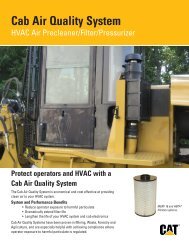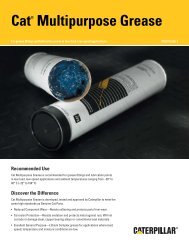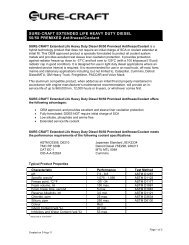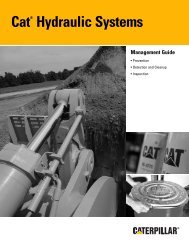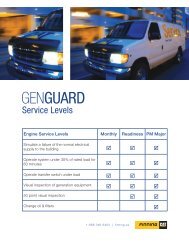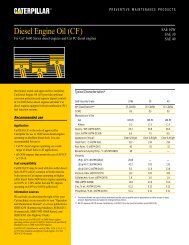View Batteries Cross Reference Guide
View Batteries Cross Reference Guide
View Batteries Cross Reference Guide
- No tags were found...
Create successful ePaper yourself
Turn your PDF publications into a flip-book with our unique Google optimized e-Paper software.
SAFETY FIRST<br />
GENERAL INFORMATION<br />
SHIELD<br />
EYES.<br />
EXPLOSIVE<br />
GASES CAN<br />
CAUSE BLINDNESS<br />
OR INJURY.<br />
MDANGER/POISON<br />
NO<br />
•SPARKS<br />
•FLAMES<br />
•SMOKING<br />
SULFURIC<br />
ACID<br />
CAN CAUSE<br />
BLINDNESS OR<br />
SEVERE BURNS.<br />
FLUSH EYES<br />
IMMEDIATELY<br />
WITH WATER.<br />
GET<br />
MEDICAL<br />
HELP<br />
FAST.<br />
KEEP OUT OF THE REACH OF CHILDREN.<br />
DO NOT TIP. KEEP VENT CAPS TIGHT AND LEVEL.<br />
DO NOT OPEN FLUSH COVER BATTERIES.<br />
DANGER<br />
EXPLOSIVE<br />
GASES<br />
POISON<br />
CAUSES<br />
SEVERE<br />
BURNS<br />
Cigarettes, flames or sparks could cause<br />
battery to explode. Always shield eyes and<br />
face from battery. Do not charge or use<br />
booster cables or adjust post connections<br />
without proper instruction and training.<br />
KEEP VENT CAPS TIGHT AND LEVEL.<br />
Contains sulfuric acid. Avoid contact with skin,<br />
eyes or clothing. In event of accident flush<br />
with water and call a physician immediately.<br />
KEEP OUT OF REACH OF CHILDREN.<br />
CALIFORNIA PROPOSITION 65 WARNING<br />
<strong>Batteries</strong>, battery posts, terminals and related accessories contain lead and lead compounds, and other chemicals<br />
known to the state of California to cause cancer and birth defects or other reproductive harm. Wash hands after<br />
handling.<br />
DO NOT INHALE SULFURIC ACID MIST<br />
DANGER OF EXPLODING BATTERIES<br />
<strong>Batteries</strong> contain sulfuric acid and produce explosive mixtures of hydrogen and oxygen. Because self-discharge<br />
action generates hydrogen gas even when the battery is not in operation, make sure batteries are stored and<br />
worked on in a well-ventilated area. ALWAYS wear safety glasses and a face shield when working on or<br />
near batteries. When working with batteries:<br />
• Always wear proper eye, face<br />
• Cover vent caps with a damp cloth<br />
and hand protection.<br />
to minimize gas seepage.<br />
• Keep all sparks, flames and cigarettes<br />
• Make sure work area is well ventilated.<br />
away from the battery.<br />
• Do not remove or damage vent caps.<br />
• Do not attempt to open a flush cover battery. • Do not breathe acid mist.<br />
• Never lean over battery while boosting, testing or charging.<br />
SAFE BATTERY INSTALLATION<br />
To assure safe installation and proper operation, follow these installation procedures:<br />
• Always wear proper eye, face and hand protection.<br />
• Disconnect ground cable first (this is usually the negative cable; however,<br />
older vehicles may have a positive ground).<br />
• Remove old battery – note position of positive (+) terminal and negative (–) terminal.<br />
Mark the cables for correct connection to new battery.<br />
• Clean terminals and cable connections with a wire brush.<br />
Broken connections or frayed or cut cables should be replaced.<br />
• Install the new battery in the same position as the old one.<br />
Be sure to secure it with the hold-down assembly.<br />
• Make sure the terminals do not touch any metal mounting, engine or body parts.<br />
• Connect cables tightly. Connect ground cable last to avoid sparks and explosion.<br />
SAFE CHARGING<br />
Before beginning the charging operation, read and follow the instructions that come with the charger.<br />
Never attempt to charge a battery without first reviewing the instructions for the charger being used.<br />
In addition to the charger manufacturer’s instructions, these general precautions should be followed:<br />
• Always charge batteries in a well-ventilated area and wear proper eye protection.<br />
• Turn the charger and timer “OFF” before connecting the leads to the battery<br />
to avoid dangerous sparks.<br />
• To avoid an explosion, never try to charge a visibly damaged or frozen battery.<br />
• Connect the charger leads to the battery; red positive (+) lead to the positive (+) terminal<br />
and black negative (–) lead to the negative (–) terminal. If the battery is still in the vehicle,<br />
connect the negative lead to the engine block, away from the battery, to serve as a ground.<br />
(If the vehicle is positive grounded, connect the positive lead to the engine block.)<br />
10








